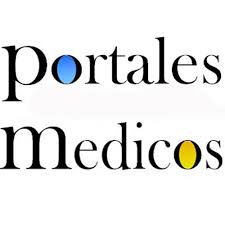Desenlaces del trauma ocular como factores pronósticos de la agudeza visual según las escalas birmingham eye trauma terminology (bett) y ocular trauma score (ots)
Ocular trauma outcomes as prognostic factors for visual acuity according to the birmingham eye trauma terminology (bett) and ocular trauma score (ots) scales
Resumen
DOI: https://doi.org/10.53766/GICOS/2024.09.03.23
Las complicaciones o desenlaces que se presentan después de un trauma ocular se reconocen como los principales factores predictivos o pronósticos del grado de agudeza visual post trauma ocular. Se considera que conforman la base de las clasificaciones que pretenden valorar el pronóstico de los pacientes con lesiones oculares traumáticas, como por ejemplo, las escalas Birmingham Eye Trauma Terminology (BETT) y Ocular Trauma Score (OTS). En la literatura se revisan ampliamente los desenlaces en mención; no obstante, se omite el reporte de características como la laceración de córnea y la presencia o no de fractura orbitaria. El objetivo de esta revisión es señalar de manera sistemática, los principales desenlaces que se deberían tener en cuenta en la valoración pronóstica de la lesión ocular, bien sea abierta o cerrada. Se utilizó como metodología el enfoque cualitativo, tipo revisión con diseño narrativo, para describir los distintos tipos de desenlaces del trauma ocular, haciendo énfasis en el añadido de distintos aspectos hasta ahora poco considerados, en función de mejorar su capacidad de pronóstico. En la literatura revisada, resaltaron los desenlaces referidos a la presencia de mala agudeza visual inicial, ruptura del globo ocular, desprendimiento de retina, diagnóstico de catarata traumática concomitante, hemorragia vítrea, hifema traumático, necesidad de inyecciones intravítreas, endoftalmitis, laceración del párpado y de los anexos oculares, además del traumatismo orbitario. Se concluye con el requerimiento de recomendar estudios comprehensivos de los desenlaces del trauma ocular, para complementar las escalas BETT y OTS y mejorar su capacidad de predicción de agudeza visual.
Complications or outcomes that occur after ocular trauma are recognized as the main predictive or prognostic factors of the degree of visual acuity after ocular trauma. They are considered to form the basis of the classifications that aim to assess the prognosis of patients with traumatic ocular injuries, such as the Birmingham Eye Trauma Terminology (BETT) and Ocular Trauma Score (OTS) scales. The aforementioned outcomes are widely reviewed in the literature; however, the reporting of characteristics such as corneal laceration and the presence or absence of orbital fracture is omitted. The objective of this review is to systematically indicate the main outcomes that should be taken into account in the prognostic assessment of ocular injury, whether open or closed. The qualitative approach methodology was used, a review type with a narrative design, to describe the different types of outcomes of ocular trauma, emphasizing the addition of different aspects, until now little considered, in order to improve their prognostic capacity. In the reviewed literature, the outcomes related to the presence of poor initial visual acuity, rupture of the eyeball, retinal detachment, diagnosis of concomitant traumatic cataract, vitreous hemorrhage, traumatic hyphema, need for intravitreal injections, endophthalmitis, laceration of the eyelid and ocular adnexa, in addition to orbital trauma, were highlighted. The conclusion is that comprehensive studies of the outcomes of ocular trauma should be recommended, to complement the BETT and OTS scales and improve their ability to predict visual acuity.
Recibido: 24-08-2024
Aceptado: 27-09-2024
Publicado: 01-11-2024
Palabras clave
Texto completo:
PDFReferencias
Abdullah, R., Fatmariyanti, S., & Dwikoloso, H. (2021). Comparison of Prognostic Prediction Value by Ocular Trauma Score with Visual Outcome in Ocular Foreign Body Trauma. Int J Res Publ, 83(1), 164-172.
Agency Defense Health. (2022). Treatment of ocular trauma and vision-threatening. Conditions by deployed ophthalmologists (eye surgeons). Virgina, USA: Defense Health Agency.
Agrawal, R., Shah, M., Mireskandari, K., & Yong, G. K. (2013). Controversies in ocular trauma classification and management. International ophthalmology, 33, 435-445.
Ameli, K., Arabi, A., Shahraki, T., Markatia, Z., Mashouf, P., Shahraki, T., & Lee, W. (2023). The Association Between Computerized Tomography Findings and Ocular Trauma Score in Open Globe Injury: The Prognostic Value of Imaging. Ophthalmic Plastic & Reconstructive Surgery, 39(2), 136-140.
Batchelor, A., Hunt, M., Lacy, M., Lee, C. S., Lee, A. Y., Chee, Y., & Saraf, S. (2022). Predictors of long-term ophthalmic complications after closed globe injuries using the IRIS® Registry (Intelligent Research in Sight). Investigative Ophthalmology & Visual Science, 63(7), 3540-A0120.
Bruce, C. N., Beal, C. J., & Zou, B. (2022). Visual outcomes and prognostic factors for pediatric open globe injuries. Pediatric emergency care, 38(2), e439-e442.
Choi, S., Park, J., Park, S., Byon, I., & Choi, H. Y. (2021). Establishment of a prediction tool for ocular trauma patients with machine learning algorithm. International Journal of Ophthalmology, 14(12), 1941-149.
Cohen, E., Antman, G., Katzburg, E., Cohen, N., Varssano, D., Glatz, M. M., & Dotan, G. (2022). A modified pediatric ocular trauma score for predicting visual outcome post open globe injury. Graefe's archive for clinical and experimental ophthalmology, 260(11), 3711-3718.
Demir, M., Akpolat, C., Akar, S., Muftuoglu, G., & Ozkan, S. (2021). Prognostic factors affecting functional and anatomical outcome in globe injuries. Med Sci, 10, 804-811.
Dursun, Ö., Özer, Ö., Vatansever, M., Dinç, E., Oktay, Ö., & Temel, G. Ö. (2022). Comparison of two scoring systems in pediatric open globe injuries. Journal of Craniofacial Surgery, 33(2), e105-e107.
Gaier, E. D., Tarabishy, S., Bayers, C., Wolkow, N., Gardiner, M., Lefebvre, D. R., & Grob, S. (2020). Poor prognoses of open globe injuries with concomitant orbital fractures. Orbit, 39(4), 241-250.
Heath, R. C., Dobes, J., & Chen, F. K. (2022). Eye injuries: understanding ocular trauma. Australian journal of general practice, 51(7), 476-482.
Ho, H., Foo, J., Li, Y. C., Bobba, S., Go, C., Chandra, J., & Fung, A. T. (2021). Prognostic factors and epidemiology of adult open globe injuries from Western Sydney: a twelve-year review. BMC ophthalmology, 21, 1-6.
Irawati, Y., Ardiani, L. S., Gondhowiardjo, T. D., & Hoskin, A. K. (2022). Predictive value and applicability of ocular trauma scores and pediatric ocular trauma scores in pediatric globe injuries. International journal of ophthalmology, 15(8), 1352-1356.
Kyriakaki, E. D., Symvoulakis, E. K., Chlouverakis, G., & Detorakis, E. T. (2021). Causes, occupational risk and socio-economic determinants of eye injuries: a literature review. Medicine and pharmacy reports, 94(2), 131-144.
Lee, B. W., Hunter, D., Robaei, D. S., & Samarawickrama, C. (2021). Open globe injuries: epidemiology, visual and surgical predictive variables, prognostic models, and economic cost analysis. Clinical & Experimental Ophthalmology, 49(4), 336-346.
Moreno, M., Pérez, Z., Palazuelos, M., Hernández, J., y Padilla, C. (2021). Resultados visuales del trauma ocular a globo abierto en zona I. Revista Cubana de Oftalmología, 34(3), 1-12. http://scielo.sld.cu/pdf/oft/v34n3/1561-3070-oft-34-03-e924.pdf.
Mohseni, M., Blair, K., Gurnani, B., Bragg, B. N. (2023). Blunt eye trauma. In: StatPearls [Internet]. Treasure Island (FL): StatPearls Publishing; 2024 Jan-. https://www.ncbi.nlm.nih.gov/books/NBK470379/
Narendran, K. (2020). Referral in ocular trauma. Kerala Journal of Ophthalmology, 32(2), 110-113.
Ocal, M. C., Yildirim, Y., Ozveren, M., Kepez Yildiz, B., Demir, G., Kandemir Besek, N., Urdem, U., & Altan, C. (2020). Validity of ocular trauma score in open globe injury patients from Turkey. Journal Français d'Ophtalmologie, 43(9), 891-897.
Öztürk, H., & Özen, B. (2022). The clinical features and the factors affecting visual prognosis in pediatric open-globe ınjuries. International ophthalmology, 42(11), 3589-3600.
Pirhan, D., Subasi, S., Musaoğlu, B. K., Alparslan, B., & Karabaş, L. (2023). The relationship between computed tomography findings and ocular trauma and pediatric ocular trauma scores in pediatric globe injuries: Does imaging have prognostic and diagnostic value? Turkish Journal of Trauma & Emergency Surgery, 29(11), 1280-1287.
Porapaktham, T., Choovuthayakorn, J., Nanegrungsunk, O., Phinyo, P., Tanasombatkul, K., Watanachai, N., Kunavisarut, P., Chaikitmongkol, V., & Patikulsila, D. (2023). Open globe injury in a tertiary hospital of northern Thailand: No vision survival and ocular trauma score. Clinical ophthalmology, 17, 365-373.
Puodžiuvienė, E., Valeišaitė, G., & Žemaitienė, R. (2021). Clinical characteristics, visual outcomes, and prognostic factors of open globe injuries. Medicina, 57(11), 1198.
Rahman, S., Hossain, A., Alam, S., Rahman, A., Sultana, C., Islam, S., Jamal Khan, Y., & Amiruzzaman, M. (2021). Mechanical eye trauma epidemiology, prognostic factors, and management controversies—An update. Open Journal of Ophthalmology, 11, 348-363.
Razeghinejad, R., Lin, M., Lee, D., & Katz, L. (2020). Pathophysiology and management of glaucoma and ocular hypertension related to trauma. Survey of Ophthalmology, 65(5), 530-547. doi:10.1016/j.survophthal.2020.02.003.
Razo-Blanco, D., y Lima, V. (2015). Comparación del Ocular Trauma Score en traumatismo con globo abierto, atendido temprana o tardíamente. Cirugía y Cirujanos, 83(1), 9-14. https://core.ac.uk/download/pdf/82381008.pdf
Saleh, M. (2012). Ocular trauma. Blunt ocular trauma. Journal Francais d'Ophtalmologie, 35(6), 445-453.
Shah, S., Shah, M., Gunay, R., Kataria, A., Makhloga, S., & Vaghela, M. (2022). New model for the prediction of visual outcomes in young children with mechanical ocular conditions and comparison with other models. Indian Journal of Ophthalmology, 70(8), 3045-3049.
Shrestha, S., Anthony, C., Grant, A., Thapa, M., Shrestha, J., Khatri, A., Hoskin, A., & Agrawal, R. (2021). Factors affecting final functional outcomes in open‐globe injuries and use of ocular trauma score as a predictive tool in Nepalese population. BMC ophthalmology, 21, 1-8.
Toh, Z. H., Agrawal, S., Raje, D., Hoskin, A., Agrawal, R., & Khandelwal, R. (2020). International globe and adnexal trauma epidemiology study (IGATES): a report from Central India on visual outcome in open globe injuries and correlation with ocular trauma score. International ophthalmology, 40, 2797-2806.
Xue, C., Yang, L. C., & Kong, Y. C. (2020). Application of pediatric ocular trauma score in pediatric open globe injuries. International journal of ophthalmology, 13(7), 1097-1101.
Zhou, Y., Chang, P., Abdelmalik, B., Mayer, Z., Shah, A., & Steigleman, W. (2022). Prognosis of open globe injuries at a tertiary referral center: the modified Florida ocular trauma score. American journal of ophthalmology, 244, 152-165.
Enlaces refback
- No hay ningún enlace refback.
Depósito Legal Electrónico: ME2016000090
ISSN Electrónico: 2610-797X
DOI: https://doi.org/10.53766/GICOS
| Se encuentra actualmente registrada y aceptada en las siguientes base de datos, directorios e índices: | |||
 | |||
 |  |  |  |
 |  | ||
 |  |  |  |
 |  |  |  |
 |  |  |  |
 |  |  |  |
![]()
Todos los documentos publicados en esta revista se distribuyen bajo una
Licencia Creative Commons Atribución -No Comercial- Compartir Igual 4.0 Internacional.
Por lo que el envío, procesamiento y publicación de artículos en la revista es totalmente gratuito.

